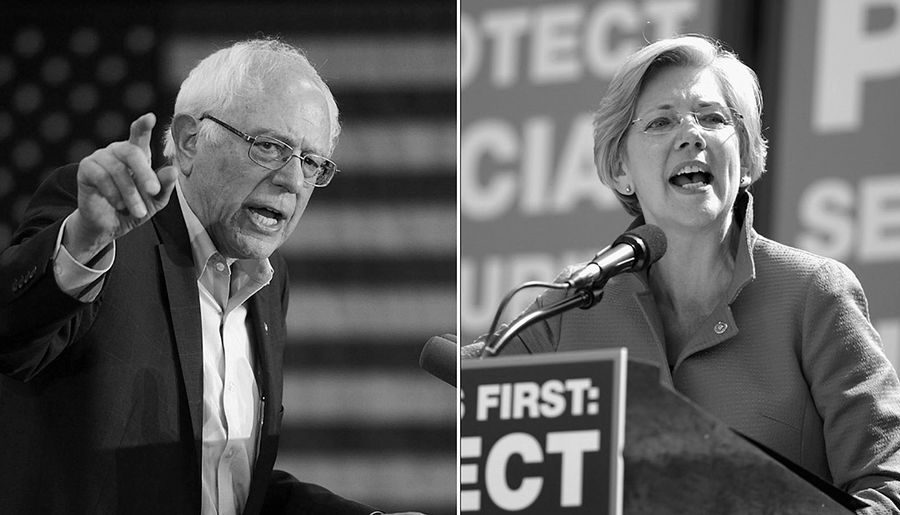Leonard Chiwoniso Mhute is a member of CWI Zimbabwe.

Yesterday, supporters and African leaders attended the funeral of Zimbabwe’s long standing dictator Robert Mugabe who has died at the age of 95. He leaves behind his family and cronies filthy rich and a trail of miseries under the brutal authoritarian Zanu-PF regime for the masses of Zimbabwe. His legacy, while perceived as controversial by some, is widely regarded as that of ruin, as he leaves behind his ZANU-PF regime still in power despite its rejection by the masses of Zimbabwe. This legacy was further evidenced by the images of a half-empty stadium at the leader’s funeral.
While in power for 37 years Mugabe never broke with the framework of capitalism and even introduced neoliberal economic policies. Despite having introduced some popular radical reforms to education and healthcare immediately after independence in 1980, these reforms could not be upheld without confronting the power of capitalism and imperialism.
Mugabe’s regime rapidly became a brutal dictatorship, using the command structure of ZANU-PF. Under Mugabe, Zimbabwe gradually adopted a cocktail of neoliberal economic policies known as ESAP which would obliterate almost overnight the gains of the country’s independence from British colonial rule.
Mugabe would spend the rest of his tenure quelling worker’s protests and strikes as well as any rebellion against the devastating effects of his policies on the lives of workers and poor. Mugabe once widely touted as a fighter for liberation after independence would become a ruthless dictator of the masses of Zimbabwe. But even before Mugabe set Zimbabwe on the course to neoliberal ruin a decade after independence, the masses in Matebeleland already knew Mugabe as a mass murderer when he unleashed any army unit to massacre 20 000 people in the early 1980s.
Mugabe ruled Zimbabwe with more than an iron fist. Around him, he built a cult of personality which would sustain his reign beyond the physical disability imposed by his old age.
It was the student movement and organised labour that led opposition to Mugabe’s rule from the 1990s onwards. A series of strikes against austerity cuts to basic services arising from ESAP became the order of the day in the 1990s. Mugabe of course would resort to force instead of responding to the demands and questions raised by these strikes. The use of detention, torture, kidnapping, murder and rape would become a trade mark of Mugabe’s response to mass resistance and general strikes.
When Zimbabwe’s economy inevitably collapsed in the late 1990s, the resistance to his reign had begun to take new forms, as its imperialist military ventures in the DRC and demands for colonial reparations plagued the near bankrupt state.
The demand for land by the rural poor in Zimbabwe also began to take root after the failure of the state’s redistributive policies, to nationalise the land after independence. Mugabe’s treacherous opportunism came full circle as he quickly adopted populist measures to quell the demand for land but even these proved ineffective as evidenced by the disastrous land reform program which left out thousands of farm workers and deindustrialized much of the entire country.
Mugabe remains widely praised for the land reform program and it is seen as a hallmark of his reign but this ignores the fact that it was in reality merely a knee jerk reaction to the demands against his regime’s total failure to fairly redistribute the land after independence. Mugabe and his cronies would also take full advantage of this chaotic programme to amass swathes of productive land amongst themselves.
Mugabe and his cronies also looted and plundered Zimbabwe’s state owned entities and decimated Zimbabwe’s working class through rampant mismanagement of the economy. Mugabe and his regime’s scapegoat has always been that the imperialist imposition of economic sanctions by the west but the fact remains that the looting and plunder began with the inception of neoliberal and pro-capitalist policies by the very same regime. While those “reforms” were given the stamp of approval by the international monetary fund and imperialism, with the “war veteran” land invasions Mugabe crossed a line – the capitalist sanctity of private property.
While western sanctions in response to the land reform programme accelerated the economic decline, Zimbabwe’s fate had already been sealed by the regime’s unadulterated pursuit of capitalist development which had led the economy into a dead end, with destructive manoeuvring the only option for his regime.
Mugabe’s regime had already taken a monstrous turn into the abyss. Mugabe’ s propaganda took advantage of the misguided call for external economic sanction by the opposition the MDC. Mugabe was to be depicted as a defender of Zimbabwe’s sovereignty .
As Zimbabwe’s crises deepened Mugabe increasingly played the role of power broker between the contending factions within his ZANU-PF party and regime.
Mugabe’s monopoly of power was sometimes challenged successfully, in particular by the MDC under Morgan Tsvangirai which handed him electoral defeats. Of course Mugabe would use the full might of the state’s machinery to steal elections and cling to power.
In the end it was a military coup in november 2017 which cut short his ambitions of ruling for life. The military acted in order to save the regime from a growing mass uprising.a
Mugabe’s legacy like large grey clouds looms large over Zimbabwe, its trail of destruction evident for all to see. Mugabe’s successor Emmerson Mnangagwa has often been described as worse than Mugabe as Zimbabwe’s crisis has intensified since ousting his former mentor.
Each day Mnangagwa appears seemingly hopeless and clueless on resolving the crises born of Mugabe’s regime 3 decades ago. Mugabe’s successors have proven to be attentive students during his reign. They have continued on the path of repression left by Mugabe almost without interruption. The neoliberal policies of the Mugabe era have only been given another name but have not changed materially. The regime’s ‘’Zimbabwe is open for business”mantra cunningly resembles ESAP with austerity being the order of the day. The opposition MDC offers no real alternative, only aiming for a coalition with the present regime.
It is up to the workers, poor and youth to solve the crisis. There is an urgent need for mass organising to overthrow the regime and the capitalist system – to struggle for a socialist Zimbabwe, socialist Africa and a socialist World.


